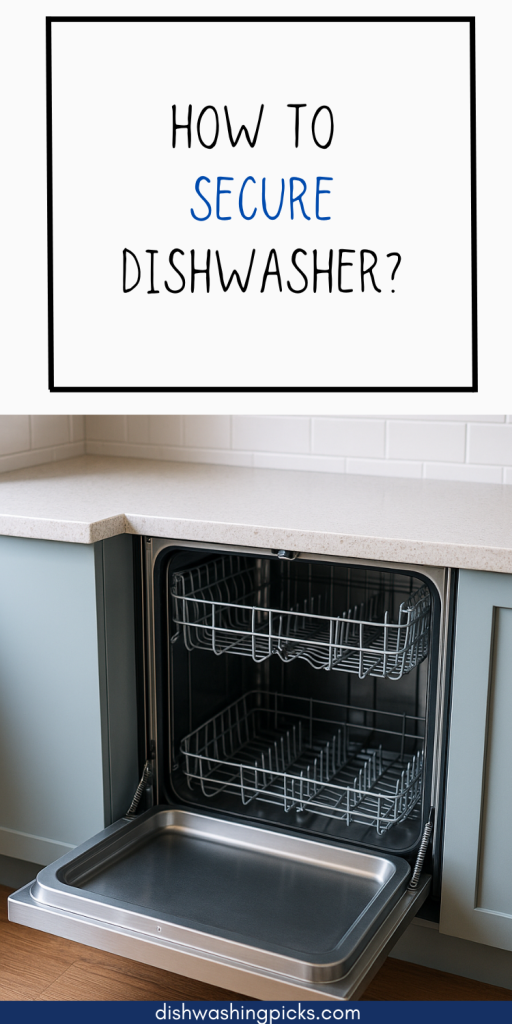
Ever noticed your dishwasher wobbling or shifting when it runs? Yeah, that’s not just annoying—it can actually cause leaks, noisy vibrations, or even damage over time. So, securing your dishwasher properly isn’t just about neatness; it’s about saving you headaches down the road.
Imagine this: You open your dishwasher after a cycle and it’s perfectly in place, humming quietly without a single rattle. Sounds good, right?
Let’s talk about why securing your dishwasher matters and how you can do it—no handyman degree required!
Why Does Your Dishwasher Need to Be Secured?
You might be thinking, “It’s just sitting there under the counter. How can it move?” Well, dishwashers are heavy appliances filled with water and dishes, and when they cycle, they vibrate and shift slightly. If it’s not anchored or fastened correctly, those little movements can add up—leading to door misalignment, water leaks, or even the appliance tipping forward (yikes!).
Plus, an unsecured dishwasher can cause annoying noises that make you want to bang on the door yourself.
Step 1: Check Your Dishwasher’s Mounting Brackets
First things first, take a peek under the countertop where your dishwasher sits. Most dishwashers come with mounting brackets that attach either to the countertop or the side cabinets.
If these brackets aren’t screwed in tightly—or worse, missing altogether—that’s a red flag. Grab a screwdriver and tighten those screws. If brackets are missing, don’t panic; you can usually buy replacements at hardware stores or online.
Step 2: Use Anti-Tip Brackets or Straps
Did you know some dishwashers come with anti-tip brackets or straps? These nifty little tools help prevent the dishwasher from tipping forward when you open the door loaded with heavy dishes.
If your dishwasher didn’t come with them, it’s worth picking some up. Installing them is usually straightforward—just secure them to the wall or cabinet frame following the instructions. It’s a simple safety upgrade that can save you from a nasty spill!
Step 3: Level Your Dishwasher Like a Pro
Nothing throws off a dishwasher’s groove like an uneven installation. A dishwasher that’s tilted can wobble or even cause water to leak out.
Use a carpenter’s level to check your dishwasher’s position. If it’s off, adjust the feet at the bottom until it sits nice and level. It’s a quick fix that makes a big difference in stability and performance.
Step 4: Seal the Gaps
Sometimes securing isn’t just about screws and brackets—it’s about sealing the gaps. If there’s too much space between the dishwasher and the cabinets or countertop, the appliance can shift or vibrate more than it should.
Use foam insulation strips or weather stripping to fill those gaps. This not only stabilizes your dishwasher but also helps reduce noise and keeps your kitchen looking tidy.
Step 5: Double-Check the Plumbing and Electrical Connections
While you’re at it, peek behind the dishwasher to make sure hoses and wires aren’t putting any strain on the unit. A tugging hose or loose electrical connection can cause movement or even damage over time.
Secure hoses with clamps and tuck cables neatly so everything stays put.
Why All This Matters
You might be wondering, “Is all this really necessary?” Here’s the thing: a well-secured dishwasher runs smoother, lasts longer, and saves you money on repairs. Plus, it prevents embarrassing kitchen mishaps—like the dishwasher tipping and dishes crashing to the floor.
So, securing your dishwasher isn’t just a one-time chore; it’s peace of mind wrapped in a neat little package.
